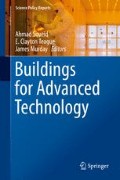Abstract
Minimization of electrical noise is a critical factor in the design and construction of all sensitive electrical instruments. This chapter addresses two important sources of electrical noise commonly found in laboratory equipment and hardware, and methods for their minimization. First, electrical noise generated from improper grounding of system components and associated hardware. Appropriate National Electrical Code is referenced for such terms as grounding conductors, grounded conductors, equipment grounding conductors and grounding electrode systems. Basic grounding requirements for every facility and a methodology for reducing electrical interference in facility design are provided. Second, common problems arising because of the instability of power source voltages, means to measure these power source variations and how they can be prevented by applying power conditioning devices to critical circuitry are described.
Access this chapter
Tax calculation will be finalised at checkout
Purchases are for personal use only
Notes
- 1.
The National Electrical Code (NEC), or NFPA 70, is a United States standard for the safe installation of electrical wiring and equipment. It is part of the National Fire Codes series published by the National Fire Protection Association (NFPA) (source: http://en.wikipedia.org/wiki/National_Electrical_Code).
- 2.
SEMI F47 is an industry standard for voltage sag immunity. It says that industrial equipment must tolerate voltage sags, or dips, on the AC mains supply to specific depths and durations. It is such a good and useful standard that many other industries use it, either formally or informally. http://www.powerstandards.com/semif47.htm
- 3.
M. Stephens, “Semiconductor Equipment voltage Sag Immunity Improvements,” EPRI PEAC Corporation. http://www.F47testing.com (2002).
- 4.
M. Stephens, D. Johns, J. Soward, and J. Ammenheuser, “Guide for the Design of Semiconductor Equipment to Meet Voltage Sag Immunity Standards,” International SEMATECH Technology Transfer #99063760B-TR (1999).
- 5.
Contactor dropout, because of power line brownouts, will be eliminated when a KnowTrip® is added to the contactor. The KnowTrip® is a patented device manufactured by SCR Controls, Inc., Matthews, NC, under license from Duke Energy. http://www.scrcontrols.com/products.asp?productName=KNOW%20TRIP&page=specs
- 6.
The Coil-Lock electronics works with AC relays, contactors, and solenoids as a hold-in-device that keeps motors and other critical process elements on line during those annoying momentary voltage sags. http://www.pqsi.com/coillocks.html
Bibliography
H. Akagi, E.H. Watanabe, M. Aredes, Instantaneous Power Theory and Applications to Power Conditioning (Wiley, Hoboken, NJ, 2007). ISBN 0470107618
R.C. Dugan, M.F. McGranaghan, S. Santoso, H.W. Beaty, Electrical Power Systems Quality, 2nd edn. (McGraw-Hill, New York, 2003). ISBN 0-07-138622-X
L.L. Grigsby (ed.), Power Systems, 2nd edn. (Taylor & Francis, Boca Raton, FL, 2007). ISBN 0849392888
R. Morrison, W.H. Lewis, Grounding and Shielding in Facilities (Wiley Interscience, New York, 1990). ISBN 0-471-83807-1
K.K. Sen, M.L. Sen, An Introduction to FACTS Controllers: Theory, Modeling, and Applications (Wiley, Hoboken, NJ, 2009) (FACTS—flexible AC transmission systems). ISBN 978-0-470-47875-2
R. Sittig, P. Roggwiller, Semiconductor Devices for Power Conditioning (Plenum, New York, 1982). ISBN 978-0306411311
The EPRI “Control-Level Power Conditioning Approach” illustration, taken from “Extending the Operating Envelope of Existing Manufacturing Processes: Control-Level Solutions”, EPRI’s “Tech Update 4-Tech Issue” (Feb. 2003), product ID: 1001664
A. von Meier, Electric Power Systems: A Conceptual Introduction (Wiley, Hoboken, NJ, 2006). ISBN 978-0471178590
Acknowledgement
Thanks to Ralph Morrison, Mark Stephens, and Chuck Thomas who synthesized material from several sources into the initial draft.
Author information
Authors and Affiliations
Editor information
Editors and Affiliations
Rights and permissions
Copyright information
© 2015 Springer International Publishing Switzerland
About this chapter
Cite this chapter
Soueid, A., Teague, E.C., Murday, J. (2015). Electric Power Grounding and Conditioning. In: Soueid, A., Teague, E., Murday, J. (eds) Buildings for Advanced Technology. Science Policy Reports. Springer, Cham. https://doi.org/10.1007/978-3-319-24892-9_7
Download citation
DOI: https://doi.org/10.1007/978-3-319-24892-9_7
Published:
Publisher Name: Springer, Cham
Print ISBN: 978-3-319-24890-5
Online ISBN: 978-3-319-24892-9
eBook Packages: EngineeringEngineering (R0)

